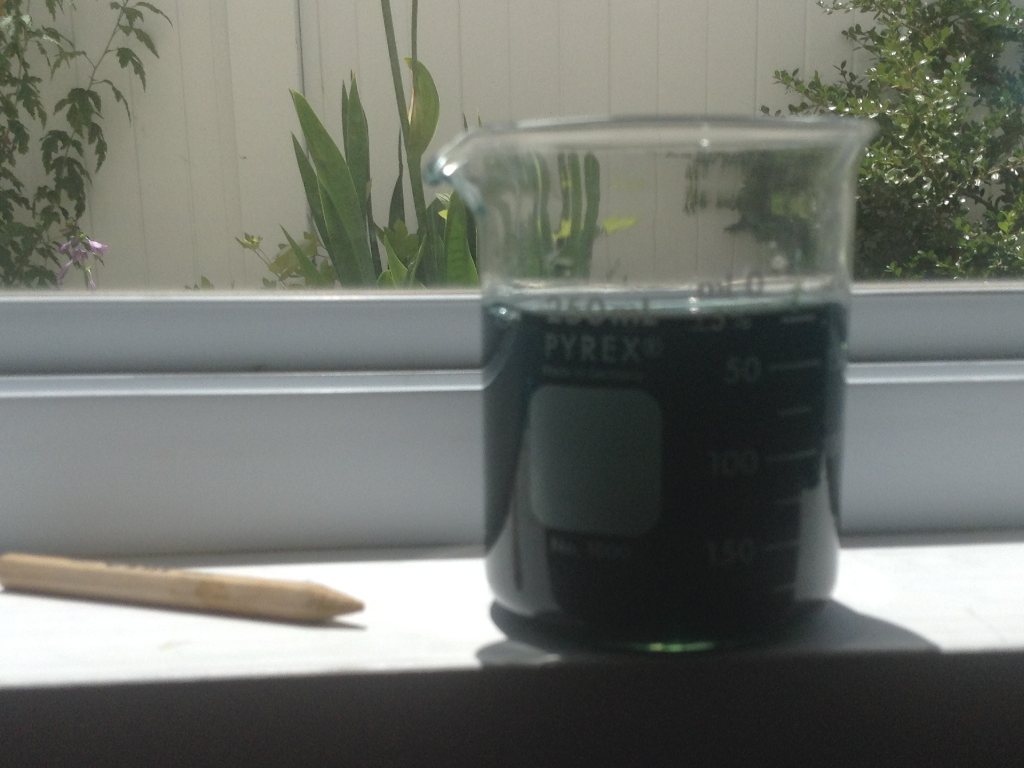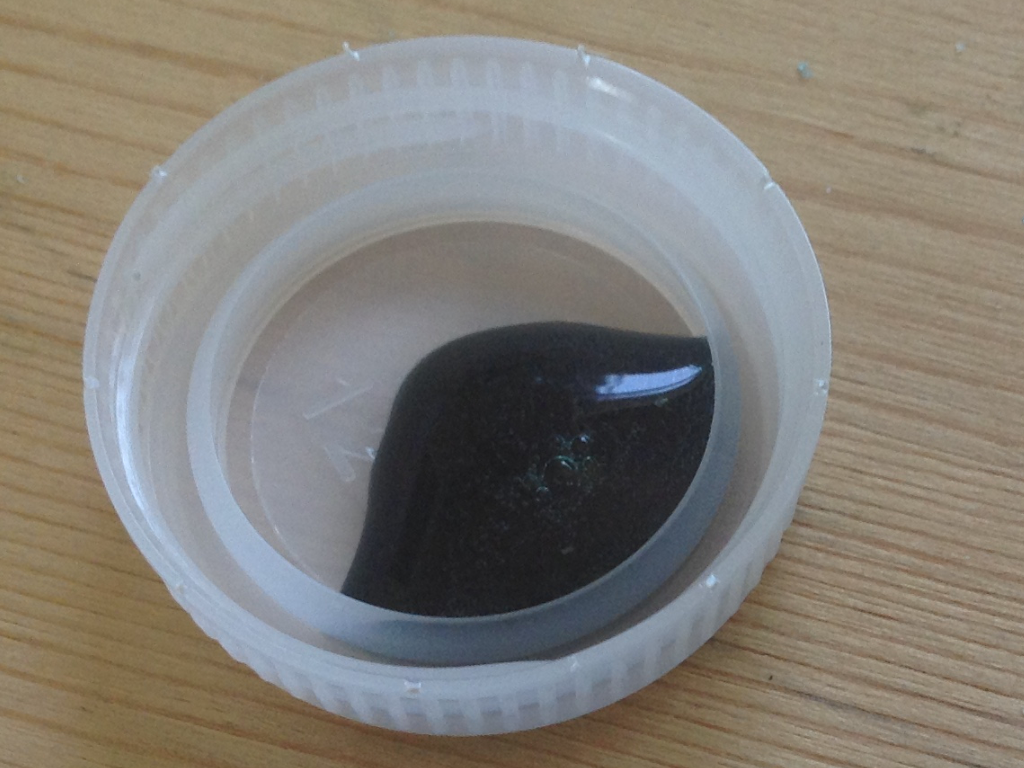myristicinaldehyde
Hazard to Others
  
Posts: 166
Registered: 23-4-2016
Location: .͐͌ ͛҉̻̫̰̻̖E̮ͮ̐́̚ ̢̗̅̉ͩ͂̒̌.̯̻̺̯̀̎͂̄ͩ̚
Member Is Offline
Mood: сорок пять
|
|
Jakub's Copper Mystery
When I made my write up (still waiting for hat eating promised to me), addition of what I assumed to be sodium salicylate (aspirin + hot sodium
hydroxide) and sodium acetate to saturated copper sulphate, a creamy green precipitate formed (as expected- copper salicylate is an insoluble green
powder) but a brilliant deep green clear solution.
Addition of 3% hydrogen peroxide resulted in a deep indigo precipitate, that formed a hard to clean film on my beaker. Sodium dichlorocyanurate did
not make either the purple complex or the blue one.
Any ideas on what the green solution and blue precipitate are? I can post pictures if needed.
If we don't study the mistakes of the future we're doomed to repeat them for the first time.
|
|
|
Texium
Administrator
       
Posts: 4583
Registered: 11-1-2014
Location: Salt Lake City
Member Is Offline
Mood: PhD candidate!
|
|
I've actually witnessed this before. The first time that I made copper acetylsalicylate, I followed bfesser's posted write-up very stringently and it
went very smoothly. I was left with a brilliant blue-green precipitate with a clear, colorless supernatant.
However, the second time that I made it, I was a lot more careless. I attempted to do it from memory, as I remembered that it seemed very easy the
first time. I yielded very little of the blue-green precipitate that I had expected, and the supernatant solution was emerald green instead of
colorless. I don't know what actually happened there, but I set it aside and tried again more carefully to achieve the proper results.
Edit: Oh wait, you're talking about copper salicylate, not copper acetylsalicylate. Yeah, that stuff is weird. It's very hard to make correctly and
doesn't seem very stable. I don't think I've ever seen a good procedure for preparing it.
[Edited on 7-4-2016 by zts16]
|
|
|
myristicinaldehyde
Hazard to Others
  
Posts: 166
Registered: 23-4-2016
Location: .͐͌ ͛҉̻̫̰̻̖E̮ͮ̐́̚ ̢̗̅̉ͩ͂̒̌.̯̻̺̯̀̎͂̄ͩ̚
Member Is Offline
Mood: сорок пять
|
|
From what I've read, it's some sort of complex, with salicylate ligands. The second time when you got that green solution is what I'm talking about. I
thought at first that the blue-black precipitate was Cu(ii) oxide- but it lakes the brown overtones, and if it is copper acetylsalicylate formation
from Cu(salicylate) and Na(acetate) aqueous and hydrogen peroxide is strange, and the color is too intense.
The green solution likely also contains quinones and possibly phenol, from overheating. It decomposes slightly, with small amounts of white crystal.
|
|
|
Texium
Administrator
       
Posts: 4583
Registered: 11-1-2014
Location: Salt Lake City
Member Is Offline
Mood: PhD candidate!
|
|
Copper aceteylsalicylate is not "blue-black" in any sense, it's an intense blue-green color. And there's absolutely no way that you acetylated the
salicylic acid.
This stuff about quinones and phenols is pure conjecture. I highly doubt that you have anything like that there.
Why did you add hydrogen peroxide anyway?
[Edited on 7-4-2016 by zts16]
|
|
|
myristicinaldehyde
Hazard to Others
  
Posts: 166
Registered: 23-4-2016
Location: .͐͌ ͛҉̻̫̰̻̖E̮ͮ̐́̚ ̢̗̅̉ͩ͂̒̌.̯̻̺̯̀̎͂̄ͩ̚
Member Is Offline
Mood: сорок пять
|
|
Yes, it is conjecture, about the presence of quinones and such. I noticed over several runs that overheating the sodium salicylate solution that the
distinctive color and stench of hydroquinones are formed. This happened once when I was preparing the copper complex.
I meant to say that it was unlikely that copper aspirinate was formed! I added hydrogen peroxide to see if the green solution would decompose or react
to make copper ii oxide.
Here are 2 pictures: of a drop of the precip., and it diluted in 10x the volume of water.
 
[Edited on 2016-7-4 by myristicinaldehyde]
|
|
|
Texium
Administrator
       
Posts: 4583
Registered: 11-1-2014
Location: Salt Lake City
Member Is Offline
Mood: PhD candidate!
|
|
I'd recommend starting over at this point. Prepare your sodium salicylate differently this time. Instead of reacting the aspirin with sodium
hydroxide, do an acid catalyzed hydrolysis of the aspirin using HCl, crash out the salicylic acid, and then neutralize some of that with sodium
bicarbonate. That should prevent the formation of any nasty byproducts. I'm still not feeling optimistic that you'll get some copper salicylate that
will be possible to filter, but your chances will be better.
|
|
|
myristicinaldehyde
Hazard to Others
  
Posts: 166
Registered: 23-4-2016
Location: .͐͌ ͛҉̻̫̰̻̖E̮ͮ̐́̚ ̢̗̅̉ͩ͂̒̌.̯̻̺̯̀̎͂̄ͩ̚
Member Is Offline
Mood: сорок пять
|
|
OK. If I get the green solution again, then at least that eliminates one variable. Time to buy more aspirin!
|
|
|